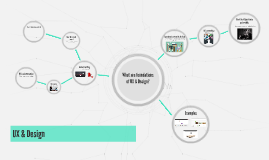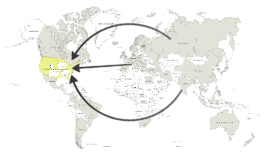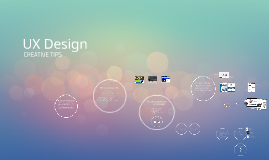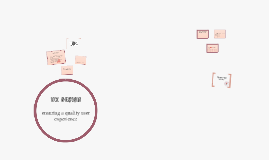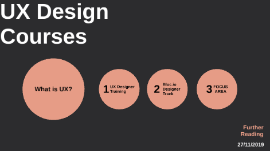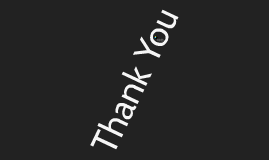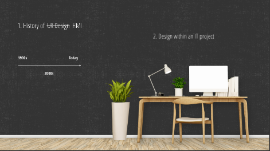UX Design
Transcript: Anticipated their audience's needs/pains Held user's hand when they needed it Organized information in a way that made sense Took an experience that can be overwhelming and made it simple and enjoyable Questions louisiana.gov Visual Communication utah.gov Utah Recap Utah What do you want your _______ to accomplish? Who are your competitors? Louisiana Font sizes are now used intelligently - drawing attention to key chunks of information The font choice itself has been chosen for easier readability, increasing the likelihood that viewers will look through and process more content Highest cost-benefit value? Having awesome customer service? Being the sole provider of a service/product? Work ethic/company values? Structure - sense of underlying framework Visual Path - what should they be seeing? Design Elements - designing intelligently Narrative - the message or story Call to Action - what response do you want? What sets you apart? White space has been utilized more effectively, allowing the reader multiple "resting spots" to bounce back to What did they do wrong? These are the key points you need to match to your audience's needs, and the information you want to ensure is seen by your viewers Do your homework up front. - (know your audience, competition, self) Seek out inspiration. Determine your end goal for the solution. Think about your solution as an experience from start to finish. Be aware of, and utilize basic principles of design. Get constant feedback through user testing. There are a few key questions you need to ask: Anticipated their audience's needs/pains Organized information Simplified searching to some extent Applies to everything you see and interact with every day All forms of media are created using basic principles of design Things you know instinctively, but might not be applying on a regular basis Possibly over-simplified May have focused too much on one age group of users Honestly not much CREATIVE TIPS Principles of Design Look at how they represent themselves Research less obvious competition Compare what works with what doesn't You need to actively be seeking inspiration for better ways to do things - especially when it comes to designing for customers, or representing yourself to the rest of the world Get more phone inquiries? Increase brand awareness? Educate your audience? Encourage sales? Encourage social media presence? Tell a story "Communication through a visual aid; the conveyance of ideas and information in forms that can be read or looked upon." Used poor design choices No central focus Very little thought went into the needs of the user Provided too much information without enough direction No visual appeal Specific age-range? Certain proficiency level in various skills? Focused or broad? Example: web site The call to action includes personal contact information, implying human response and interaction Who is your target audience? Color is used more sparingly to highlight important information What did they do right? - Understand the pain/problem/need your audience has. - Address how you can help fix that problem. - Provide proof that you can make good on your promise. Before you get started... Louisiana Information has been broken into columns to keep readers engaged, (optimal character length is 50-75 per line, including spaces) and text has been tailored to answer the key questions of the audience UX Design Structure Use a grid to visually organize your blocks of information Use placement or visual hierarchy to emphasize your main point Organize information in a way that is easy to access and relevant to your audience Visual Path In most cultures, people's eyes instinctively search for a starting place in left corners This can be further encouraged by the use of color, contrast, and scale to draw the reader in (notice the use of the vibrant watch to give the reader a place to start, and how the people in the image are looking there as well - it leads the reader to the text, and back across the row of images to the right) Repetition Multiple watches - different styles shows diversity and uniformity within the brand (user is part of a community) Columns - displays emphasis on key areas of information Correlation between menu and images - focuses attention on main selling points: key products, music, and human interaction No style guide (set of design rules) Grid is non-existent "Columns" vary in width Font sizes change from front to back, or even on the same page Color and contrast are used to draw attention to specific details, but it is done so many times that it actually has the opposite affect - readers pass over the selling points There is no clear call to action, and the only option to find out more is through an impersonal web address meet. discuss the needs of your customer and ask initial questions. research. determine what your end goal for the design will be. look at competitors and other design solutions. get additional input from customer and other resources.






